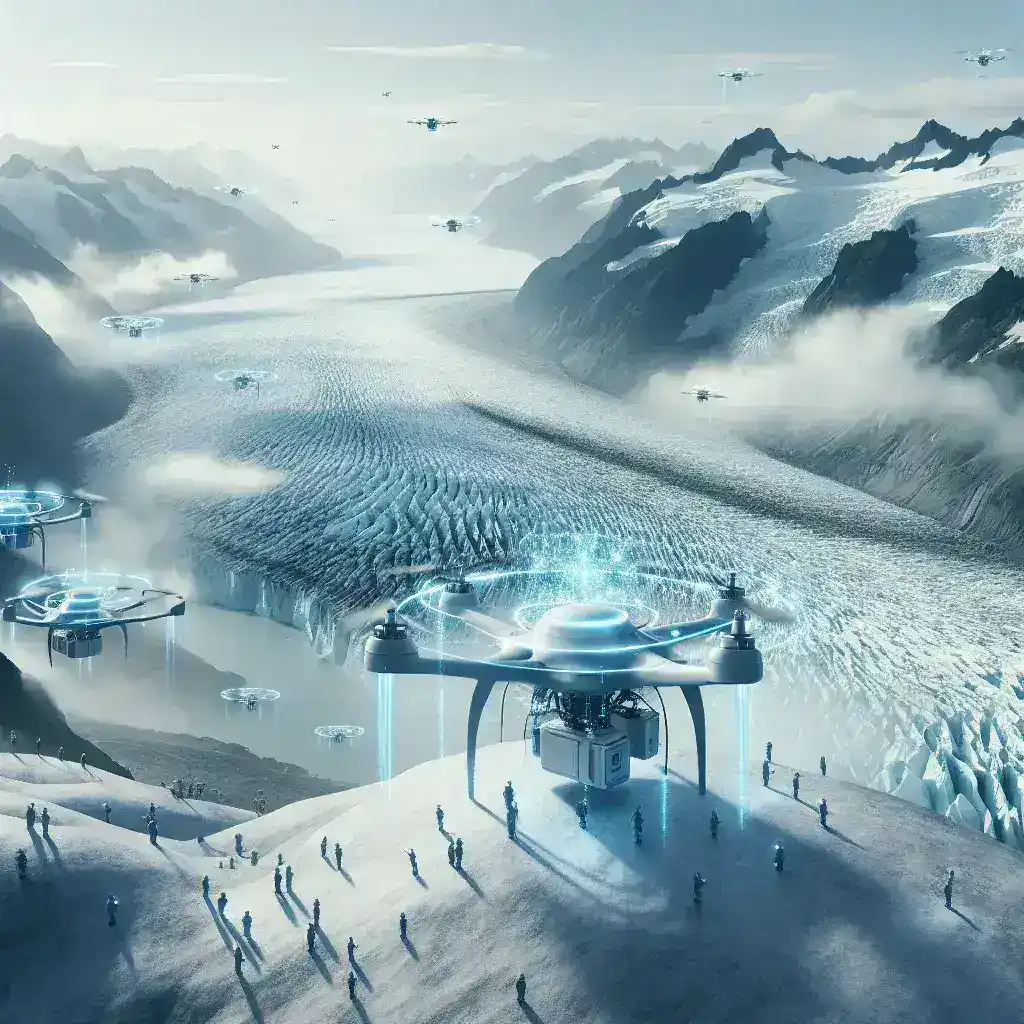AI Powered Drones Monitoring Glacier Melting for Climate Scientists
Introduction
The ongoing climate crisis is one of the most pressing issues of our time, with glacier melting serving as a stark indicator of global warming. To better understand and combat this phenomenon, climate scientists are increasingly turning to innovative technologies. Among these, AI-powered drones are emerging as a game changer in monitoring glacier melting, offering precise data collection methods that traditional techniques cannot match.
The Significance of Glacier Melting
Glaciers cover about 10% of the Earth’s land surface, and their melting contributes significantly to rising sea levels. According to recent studies, glaciers worldwide are losing mass at an alarming rate, which poses threats not just to coastal communities but to global ecosystems. By utilizing AI-powered drones, scientists can gather real-time data on glacial dynamics, enabling them to make more informed predictions about future climate scenarios.
Advantages of AI-Powered Drones
AI-powered drones are transforming environmental monitoring in several key ways:
- Precision and Accuracy: Drones equipped with advanced sensors and AI algorithms can measure glacier surface changes with remarkable precision. They offer high-resolution imagery and data analysis that traditional methods cannot provide.
- Cost-Effectiveness: Deploying drones for glacier monitoring reduces the need for extensive manpower and expensive equipment. Researchers can cover larger areas in less time, making the process both efficient and cost-effective.
- Accessibility: Drones can easily access remote or hazardous locations where glaciers are situated, enabling scientists to monitor areas that would otherwise be challenging to reach.
- Data Integration: AI systems can process and analyze vast amounts of data collected by drones, allowing for complex modeling and forecasting of glacial behavior and climate impacts.
How AI-Powered Drones Work
Understanding the operation of AI-powered drones in glacier monitoring involves several technical components:
1. Drone Design
Modern drones are built with lightweight materials, allowing for longer flights and better maneuverability. Many are equipped with multispectral cameras, LiDAR (Light Detection and Ranging), and thermal sensors that capture various aspects of the glacier’s surface and structure.
2. Data Collection
During flights, drones collect high-resolution images and laser data that help map the glacier’s topography. This data can reveal changes in ice thickness, surface melting patterns, and other critical environmental indicators.
3. AI Processing
Once data is collected, AI algorithms analyze the information to identify trends and anomalies. Machine learning models can learn from historical data, refining their predictions about future glacier behavior and contributing to climate models.
Case Studies: Successful Applications
Several research projects have successfully implemented AI-powered drones for glacier monitoring:
The Greenland Ice Sheet
In Greenland, scientists have deployed drones to monitor the ice sheet’s rapid melting. Through high-resolution aerial imagery and AI analytics, they have mapped changes in ice flow and thickness, providing crucial insights into how this melting contributes to global sea-level rise.
The Antarctic Peninsula
Research teams utilizing drones in the Antarctic Peninsula have been able to study ice shelf collapse dynamics. The drones have captured detailed images of crevasses and other structural weaknesses, helping scientists understand the causes and consequences of ice shelf disintegration.
Challenges and Limitations
While AI-powered drones offer numerous advantages, there are challenges that researchers must navigate:
- Weather Conditions: Drones are often affected by adverse weather conditions, such as strong winds and precipitation, which can impede their operation and data collection.
- Regulatory Issues: Airspace regulations and restrictions in certain regions can limit the ability to deploy drones effectively.
- Data Management: The volume of data generated by drone missions can be overwhelming. Researchers need effective strategies for data storage, processing, and analysis.
Future Predictions
The future of AI-powered drones in glacier monitoring looks promising:
- Enhanced Technology: As drone technology improves, researchers can expect increased flight times, better sensors, and more advanced AI algorithms for data analysis.
- Collaborative Efforts: Global collaboration among climate scientists, technologists, and policymakers will accelerate the adoption of drones for environmental monitoring.
- Broader Applications: Beyond glacier monitoring, AI drones may be used in various environmental applications, from forest health assessments to disaster response.
Conclusion
AI-powered drones represent a significant advancement in the field of climate science, particularly in monitoring glacier melting. By providing precise, real-time data, they empower scientists to understand the impacts of climate change more deeply and develop strategies for mitigation. As technology continues to evolve, the integration of AI in environmental monitoring will play a critical role in shaping a sustainable future.

